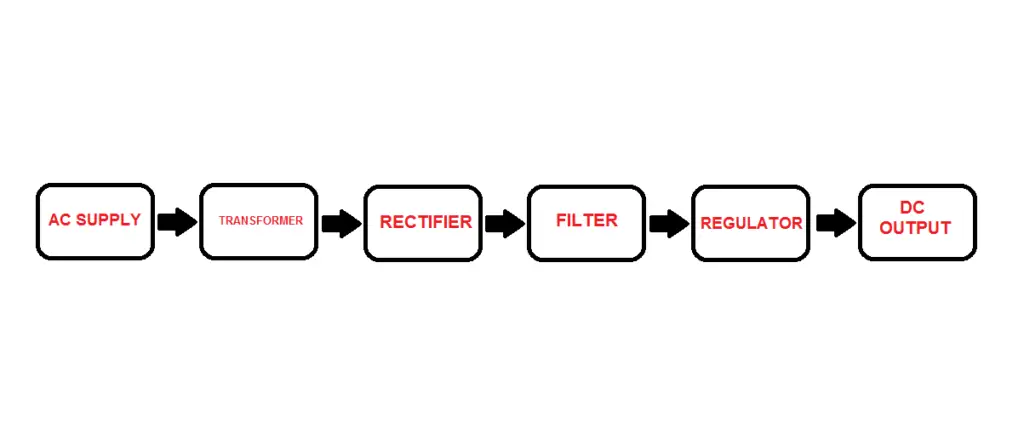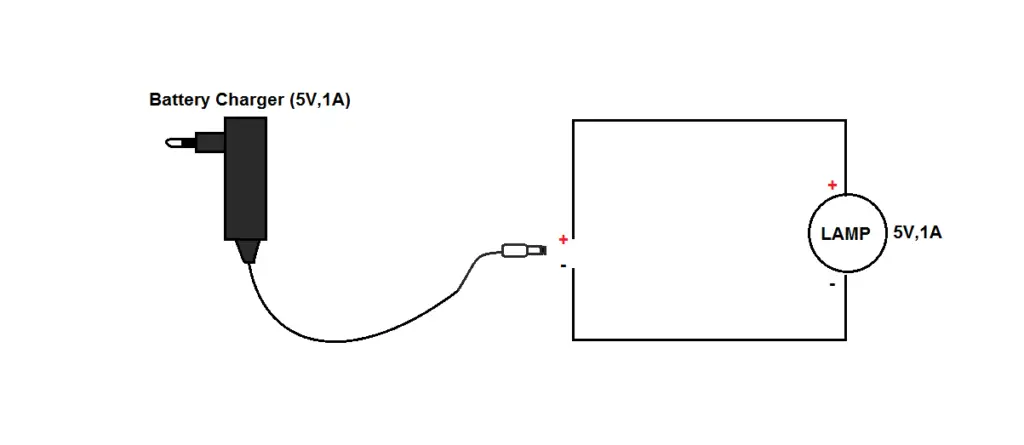A Power supply is a very essential device in an electrical and electronic system.
It is an electrical device whose main job is to provide power to an electrical load. It has the means of providing the load with a range of stable voltages and currents.
The power supply can be used by anyone from the maker in their garage, to the experienced engineer prototyping new ideas.
But, good quality power supplies can be quite expensive and acquiring one might leave a dent in your bank account.
Are there any alternatives to using a power supply?
Can you use a battery charger as a power supply?
Yes you can use a battery charger as a power supply. A battery charger is effectively a power supply. As long as the battery charger can provide the sufficient amount of voltage and current to the electrical load, it can be used as a power supply. There are some differences and considerations to take into account when using a battery charger as a power supply which shall be discussed in this article.
What is the difference between a power supply and a battery charger?
Whether you are a weekend hobbyist, or engineer, you are going to need some sort of way to power your projects.
You have many options when it comes to power sources, whether it be temporary (like a battery) or a more permanent solution (like a power supply).
Before diving into the details of why you can use a battery charger as a power supply, let’s take a closer look at both these devices individually and see what sets them apart in their main purpose.
Power supply
The power supply is the heart of any electrical and electronic system.
Just like the heart pumps blood to the rest of the organs in the human body, the power supply pumps power to the rest of the components in that system.
A power source is anything that has the ability to provide electricity in the form of voltage and current.
But, it needs to be able to supply a stable voltage and current. If the power supply has trouble supplying sufficient power it is going to cause inefficiencies in the system.
A power supply is one type of power source designed to ‘supply’ power to an electrical or electronic load (as pictured below).
It will have an input power connection which receives energy in the form of electrical current and then delivers this to its outputs where a load can get connected.
An example of power supply is one used in your computer. It is designed to receive power and distribute it to the rest of the internal components of your computer.
There are two types of power supply available; DC-DC and AC-DC.
A DC-DC power supply converts an incoming Direct Current (DC) into another outgoing Direct current.
These types of power supply are less commonly used.
An AC-DC power supply is the most commonly used of the two. It converts an incoming Alternating Current (AC) into an outgoing Direct Current.
Electrical power delivered to homes is presented at power outlets in the form of alternating current. But, most (if not all) electrical and electronic devices need a direct current (DC) to function.
So, AC-DC power supplies are most suited for these applications.
Below is a flow diagram of how an AC-DC power supply works.

Benchtop power supplies are also another form of power source used in electronics.
A benchtop power supply is great for the early development stages (prototyping) of projects, or when you are testing different voltages and currents.
This is because the power supply has the ability to provide a range of voltages and currents at its outputs depending on the power requirements of the load.
Battery charger
The emergence of mobile technology has enabled us to take our devices and use them outside of our homes without the need of an electrical cord and power outlet.
You can be hiking in a forest and still browse the internet on your smartphone.
Inside every mobile device is a Rechargeable battery. Unlike a normal disposable battery that can only be used once, a rechargeable battery can be used multiple times.
The ability for it to be used multiple times comes down to its internal chemical composition.
But, a rechargeable battery cannot just recharge by itself.
It requires a Battery charger which has the ability to provide energy to ‘recharge’ it.
The battery charger’s main purpose is just that, to recharge a mobile device’s battery.
You might be reading this article on your smartphone, or laptop and sooner or later your battery is going to run out of charge. So you will need to use a battery charger to recharge it.
There isn’t one specific type of battery charger used for all mobile devices.
They come in a range of output voltages and currents which depend on the size of the battery used in the mobile device.
For example, a smartphone battery is usually rated at 3.8 volts, while a laptop battery tends to be 11.1 volts.
So, each of these devices will need a separate battery charger designed specifically to be able to recharge it.
Why you can use a battery charger as a power supply
Now that we have taken a look at the power supply and battery charger, we can look at why it is possible to use a battery charger as a power supply.
As seen earlier, the battery charger has the task of recharging a dead rechargeable battery.
So, why can you use a battery charger as a power supply?
We know that the power supply has the function of providing power (voltage and current) to an electrical load.
The battery charger is essentially a power supply, only that it’s overall purpose is different to that of a conventional power supply.
However, it functions the same way that a power supply does.
It has an input power connection to receive energy (in the form of current) and an output which gets connected to an electrical/electronic load (in this case, mobile devices).
So a battery charger has the ability to be used as a power supply.
Can you use any type of battery charger as a power supply?
But, before we proceed, there is a bit more to using any battery charger as a power supply.
In the world of battery chargers you typically have two types;
The first type (let’s call it Type A) is commonly used for mobile technology such as smartphones, digital cameras, laptops etc.
This type of battery charger only has the job of holding a fixed voltage. The charging circuit is contained within the device itself near the battery.
The second type of battery charger (Type B) like ones used for portable power tools (where the battery can be removed), has the charging circuit contained inside the charger.
Of the two types, Type A is more suitable to be used as a power supply as Type B is a bit more complex.
Determining which type of battery charger you can use as a power supply
As you will have different types of battery chargers lying around in your home, figuring out which you can use as a power supply might be a bit confusing.
But there are some general guidelines you can follow to determine if you can use a particular battery charger as a power supply.
- Battery chargers that have a Barrel Connector , can be used as a power supply. Voltage ratings for these types of chargers will usually be 12 or 5 volts. Their current ratings can range from 350mA to 2.5A
- Battery chargers with a USB output can be used as a power supply. Their voltage ratings are usually 5V. Current ratings can range from 500mA to 2.1A.
- Laptop chargers can also be used as a power supply, however, they tend to have strange voltages like 15.4 and 19.7 volts. You might require a DC-DC step-down converter to adjust the voltage to something that is more compatible with your project.
What are the requirements when using a battery charger as a power supply?
While you can use a battery charger as a power supply, there are some requirements to consider before doing so.
Voltage and current requirements
The first thing you will need to check before using a battery charger as the main source for your project is whether it has sufficient voltage and current.
Let’s take a look at a simple example to better understand what I mean.
Say you need to power a load (a lamp in this example).
Like every electrical and electronic load, it requires a certain amount of voltage and current to operate. So, let’s assume this lamp needs a voltage of 5V and a current of 1A.
So, in order to power this lamp sufficiently, we need to provide it with a voltage of 5V and current of 1A.
Since there are many different types of battery chargers, you will need to select one that has output voltage and current ratings that match the load you are powering.
Note, avoid choosing a battery charger that has an output voltage rating higher than the voltage rating of the load you are powering as you run the risk of damaging it.

Stable power out
A good power supply needs to supply a stable voltage and current to its load.
If it cannot do so, it is going to cause the electronic system to be inefficient and you will encounter issues of your project randomly shutting off as it does not have enough power.
The same can be said for a battery charger.
You will need a battery charger that has the capability of providing a stable power output so that you avoid the problems mentioned above.
Battery chargers that do not cost much can be an issue as they are manufactured using cheaper parts and materials.
While you save on money, you forfeit the stability of output power.
So fork out a little bit more money and invest in a good quality battery charger.
Benefits of using a battery charger as a power supply
So, you can use a battery charger as a power supply.
Great!
But, why would you want to do so?
Why not just buy a power supply?
Well, there are many benefits to using a battery charger as a power supply.
The first benefit being that a battery charger is less expensive than a power supply. You can get yourself a good quality battery charger for under $50.
Next on the list of benefits is that battery chargers are readily available. You will no doubt have a couple of them lying around. You will also be able to find them at your local electronic store.
Finally, battery chargers are smaller than a power supply. This makes it easy to set up a project without having to lug around a power supply.
Can you use a USB charger as a power supply?
Yes you can use a USB type battery charger as a power supply.
As we saw earlier, a USB battery charger is a Type A charger which holds a voltage making it easier to use as a power supply.
These types of chargers are commonly used with mobile devices like smartphones, digital cameras etc.
Their output voltage is usually 5V with output currents that range from 500mA to 2.1A.





